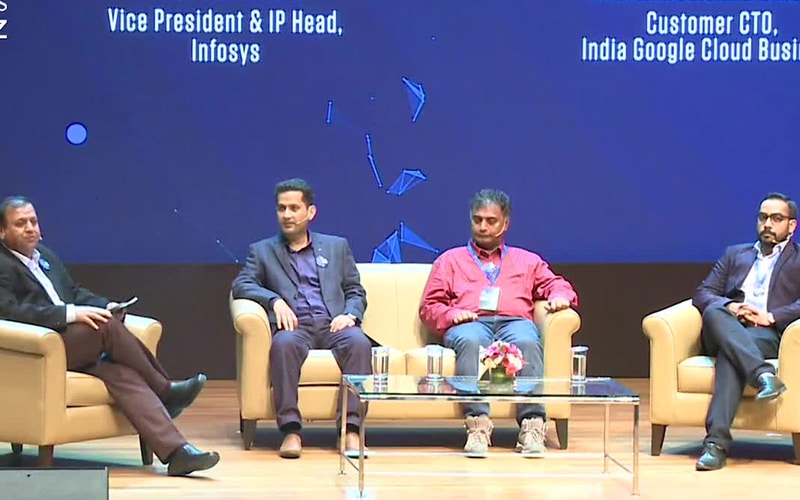Insights
- The skyrocketing rate of product returns is becoming a nuisance for retailers.
- Retailers are experiencing significant revenue loss because of it.
- Also, most returned products end up in landfills causing severe damage to the environment.
- Retailers should implement strategies related to AI, cloud, augmented reality, and data quality to reduce returns and minimize costs.
- This can also help create a hassle-free returns process, enhancing customer experience and satisfaction.

Retailers are facing an increasingly challenging – and expensive – problem with items being returned. In 2023, the total return rate in US retail sales was 14.5%, as per a report by National Retail Federation (NRF) and Appriss Retail. Returns amounted to close to $743 billion, leading to significant losses for retailers. The retail industry has been battling the returns issue for some time now, and must now devise new strategies to diminish the fallouts. However, this also creates an opportunity: retailers can use this as a reason to build better customer relationships and enhance customer experience.
Why customers return purchases
Studies show that clothing is the most returned online purchase category in the US, as of December 2023, followed by bags and accessories, and shoes. The holiday and post-holiday season is almost always accompanied by a surge in return rates. The most common reasons for online purchase returns include customers feeling that the product looks different from what they had expected, or it does not fit well. Sometimes it is merely because the customer has simply changed their mind.
Returns can also occur due to flaws on the part of retailers. For example, when a product is delivered too late due to supply chain disruptions, the wrong product is shipped, or it suffers damage during production or delivery due to poor packaging quality.
Clothing is the most returned online purchase category in the US, followed by bags and accessories, and shoes. Return rates surge during the holiday and post-holiday season.

Retailers pay the price
While product returns are effortless for consumers, retailers must bear the brunt. The cost of returns and the ensuing blow to revenue is abysmal, with returns processing usually costing retailers over half the price of the product itself. As inspecting clothing returns for resale takes almost thrice the time it does for other items, companies need to invest in the workforce required for assessment and returns handling. If the item does not make the cut, it ends up in a landfill, taking a huge toll on the planet.
Very often, retailers must deal with return fraud which includes receiving items that have been used, or even shoplifted. Some returns occur when customers resort to bracketing, which is ordering an item in different sizes or shades, and returning what does not fit or appeal to them. To make matters worse, high inflation has led to a rise in organized retail crimes, threatening the safety and well-being of retail employees.
The sooner retailers find ways to manage returns, the better it will be for their revenue and profit growth. The good news is that even a small reduction in return rates and related costs are proven to lead to direct improvement in the company’s profitability. Retailers can also use this chance to peek into the minds of their consumers, understand the psychology behind returns, and evolve strategies to drive meaningful customer relationships and customer experience.

Strategies for effective returns management
To perfect the returns management process, retailers must arm themselves with tools that marry consumer insights with the best in technology and returns management software.
- Technology adoption
To reduce returns because of an item looking different or fitting poorly, retailers should introduce augmented reality-powered virtual try-on features on their ecommerce sites. This technology gives customers a fairly accurate sense of how a particular item looks on them, minimizing chances of returns. Having AI-powered chatbots and virtual assistants can help customers with their queries regarding a purchase, provide personalized product recommendations, and guide them with making better-informed purchase decisions. Smart mirrors, also known as magic mirrors, can be used in brick-and-mortar stores – where attempts to try on clothing might be thwarted by changing rooms that are occupied or unavailable – to help customers try on clothes quickly and conveniently, reducing returns. Brands such as Zara, H&M, and American Eagle are using this technology to provide an enhanced shopping experience.Retailers should introduce augmented reality-powered virtual try-on features on their ecommerce sites – giving customers a fairly accurate sense of how a particular item looks on them – to minimize returns.

Cloud-powered order management systems (OMS) are a great way for retailers to manage their entire order processing and fulfillment process smoothly. For efficient returns management, cloud-based reverse logistics solutions can be used to process real-time data from teams managing returns, gain visibility into the returns process, and enable a more streamlined inventory management system, thus reducing unnecessary strain on resources. Data-driven insights powered by AI can be used to improve automated workflows for returns management, as well as predict and mitigate supply chain disruptions before they occur. This helps retailers minimize sunk costs from customer returns, save time and effort, and develop an environment-friendly and sustainable returns process. Besides using technology, it is also important for retail stores to perform internal quality checks to ensure that the right product is being shipped, the packaging is damage-proof, and they are partnering with reliable vendors for product delivery. - Clear customer communication
Retailers should include detailed product descriptions and high-quality images from multiple angles on their ecommerce sites to enable customers to make better purchase decisions. Specifying return policies including information on limited return windows, and the terms and conditions for return, can also minimize unnecessary returns. Offering store credit instead of cash refunds for returns can be a deterrent for returns. Using packaging that makes it easy to tell if an item has been used is a means to prevent wardrobing related fraudulent returns. Staff should also be trained in identifying suspicious returns.High-quality product descriptions and images of products on ecommerce sites can help customers make better purchase decisions.
Proactive communication and updates to customers throughout the returns process will help establish trust and strengthen customer relationships. Initiatives to help customers resell a pre-loved product to other customers of the brand can also help retailers promote sustainability, carbon footprint reduction, and responsible returns, while minimizing loss from returns. - User-generated content (UGC)
This type of content – be it customer reviews, survey or polls responses – especially sought at an early stage, right after a product release, is a rich source of information for retailers to understand the reception of a product from a user’s perspective. It tips them off on issues associated with the quality, quantity, or price of the product, allowing them to course correct quickly and make the product more favorable. It provides the option to personalize the product and transform customers’ negative experiences into positive ones. Some retailers use returns analytics data to warn other customers about the product being frequently returned, during checkout on a site, to drive purchase confidence and reduce returns.User-generated content can tip retailers off on issues associated with the quality, quantity, or price of the product, allowing them to course correct quickly and make the product more favorable.
Returns management is a continually evolving and complex process that is difficult to ace. Retailers will have to keep an eye out for new challenges, and use technology smartly to achieve returns optimization, loss reduction, and the creation of an efficient returns system for themselves while also delivering remarkable customer experiences.





